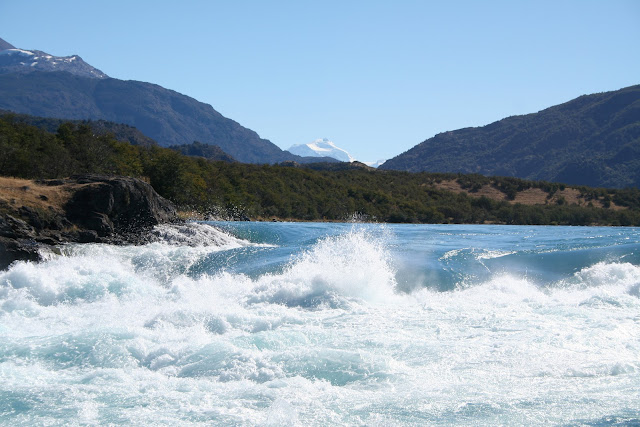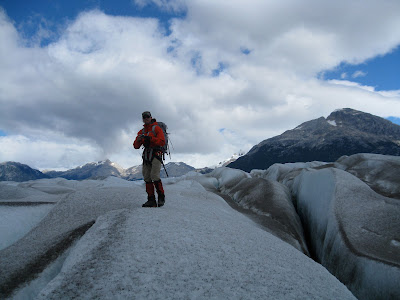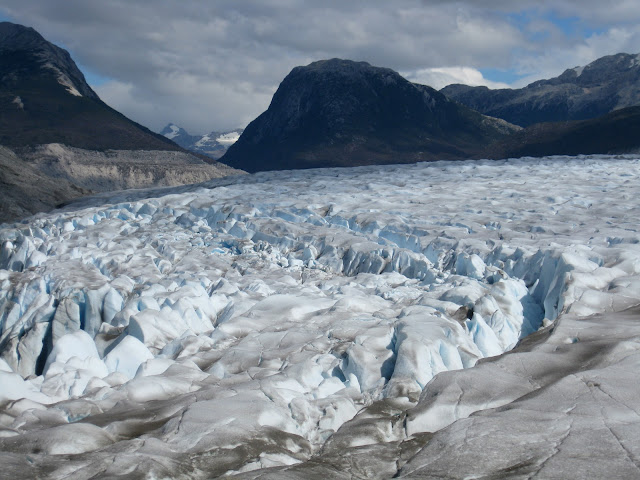 |
| How many flights get missed this way? |
There is a vast amount of real estate at Delhi International Airport—huge, open (and largely empty) hallways; smoking rooms; prayer rooms; corners with chaise lounges; and roomy boarding areas. I stood in a lengthy line to check in with Jet Airways and was then suddenly ushered to the back side of the check-in counter, where there were additional agents and no lines. To fly from Delhi to Kathmandu was costing me a mere $129. But then I threw my two duffels onto the belt, and the agent scowled and told me I was well over the weight limit. "Would you like to pay the excess baggage fee?" he asked. Rhetorical, or do you think there is gear I can leave behind? I knew I'd be over the 20-kg weight limit. I can't imagine anyone climbing a peak in Nepal could do otherwise. Not only did I need gear for the trek, but I also needed additional gear for Island Peak—a second pair of boots, ice ax, helmet, crampons, harness, and some warmer clothes. What I ended up paying in excess baggage fees equaled a third of my ticket price.
We started boarding a full hour before departure time. There was no rhyme or reason to the boarding process, and it took the full hour to fill every seat in the 737. I had hoped for a window seat and a view of the mountains but was stuck with 29D. Off we went, and immediately after takeoff, a number of men decided they'd head to the bathrooms. The flight attendants kept telling them to take their seats, but they just pushed their way to the back of the plane. One hour and twenty minutes flight time. The first task for the flight attendants was to rush down the aisles with plastic tubs filled with cans of beer. Beer for everyone, no charge. Then they delivered a hot meal to each and every passenger. Again, no charge. And they accomplished all of this in an hour and twenty minutes. Efficient.
As we approached Kathmandu, the Indian woman next to me started praying and had tears in her eyes. Uh oh. I realized our speed had not slowed enough, at least not to what I considered acceptable landing speed. Were we really going to land at this speed? The ground got closer and closer, and the wings appeared to almost skim the rooftops of nearby houses. And yes, we did land at the speed. It was almost as if that pilot threw the plane at the runway. So there. Welcome to Kathmandu.
I am a very organized person, sometimes almost to a fault. Before leaving home, I had downloaded and printed a copy of the form needed to apply for a Nepali visa upon arrival. I had my two passport photos neatly paper-clipped to the top of my already-filled-out form. I was ready to jump in line at the airport. I wasn't going to linger. Very contrary to character, I managed to lose that form somewhere between the boarding area in Delhi and the arrival area in Kathmandu. I frantically dumped everything out of my canvas bag, but it was gone. I filled out another form but had no photos. I figured I couldn't be the only one with that problem, and sure enough, there was a woman in a corner who was offering passport photos for 240 rupees. Of course I didn't have any rupees. She directed me towards the ATM. I hadn't done my homework, so I had no idea what the exchange rate was. I withdrew 500 rupees. I later realized I had withdrawn only $10 and was charged about $3 for the transaction.
By the time I had sorted out my visa form and photos, I was at the very end of one of the "foreigners without visas" lines. This was not going to play out well. About an hour and a half later, I was finally free to go claim my bags and look for the Alpine Ascents rep sent to retrieve me. So much for best laid plans. Next time, I will ignore the advice I was given and will apply for the visa before I leave home.
The roads of Kathmandu are total chaos. They drive on the left, which is already disconcerting, and then motorcycles try to thread the needle between cars, buses, or trucks. It is dirty, loud, and smoggy. Construction abounds. Fortunately, the hotel is only 7 km from the airport. At 8 PM last night, I could not manage to keep my eyes open. Plagued by odd dreams, I slept but was then wide awake at 2:30 AM. I dozed on and off until 5:30 and then allowed myself to get up.
I was one of the earlier trekkers/climbers to arrive, but I met a few members of the team at breakfast after I had easily wasted a couple hours catching up with Eric Murphy, my guide on Kili. Most were quite surprised that I had arrived by heading east from Seattle instead of west. My guess is that my connection through Paris and Delhi was far better than some of the routes through Hong Kong, Seoul, or Bangkok. And a free business class ticket is a free business class ticket. I'll take whatever route I'm offered.
I ventured about 300 yards from the hotel today, far enough to decide that I'm not up for wandering unfamiliar streets or dealing with Kathmandu's oppressive pollution. And I was too wimpy to cross the major thoroughfare, where cars consider it sport to run you down. I retreated to the hotel, opting to read by the pool. More trekkers/climbers arrive today, and the group will round out tomorrow. There are 9 Everest climbers, 16 trekkers (3 of whom are climbing Island Peak), and a lot of family overlap between the climbers and trekkers (dads and sons or daughters climbing Everest and their wives/siblings trekking in to Base Camp). In my mind, we can't get out of Kathmandu soon enough. But then there's that little issue of our upcoming flight from Kathmandu to Lukla...






















































